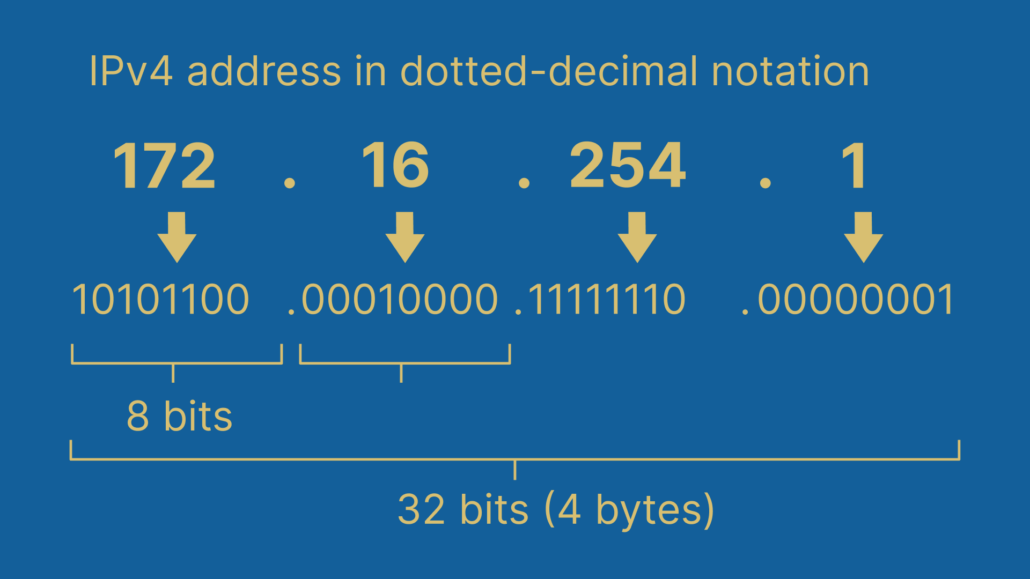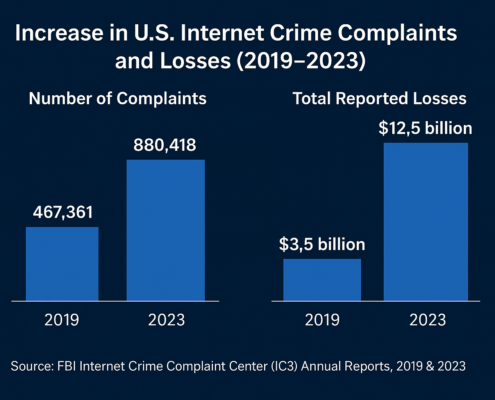IPv4 is the Backbone of the Internet
02 May 2022IPv4 stands for Internet Protocol version 4, and it plays a crucial role in routing the vast majority of current internet traffic. However, the world is facing a significant challenge with IPv4: its global address space is now fully allocated.
To clarify, IPv4 is an essential set of rules governing online communications. For over three decades, this v4 protocol has been at the core of internet operations, originating from its deployment on the ARPANET by the U.S. Department of Defense in 1983.
Today, IPv4 finds itself at a critical juncture due to the complete exhaustion of the global IP address pool originally allocated at inception. This situation is propelling the internet towards a slow but inevitable adoption of IPv6 and CGNAT, which both have their own hurdles.
Understanding IPv4 Addresses
This article delves into the key elements of the internet’s structure, focusing on the pivotal role of IPv4. We will dissect its limitations in the contemporary digital landscape and provide insights into the transition to IPv6. Our aim is to furnish you with a detailed understanding of these protocols and their implications for the future of internet connectivity.
In addition to exploring IPv4, we’ll offer a brief overview of the internet’s operational dynamics to enrich your comprehension of how it facilitates global communication.
Our explanation & analysis is designed to equip technology professionals and enthusiasts with a clear, authoritative perspective on IPv4 addressing. Our approach is direct and informed, underpinned by a thorough evaluation and expert commentary to keep you ahead in the rapidly evolving network & infrastructure industry.
Insight on Internet Protocols
IP stands at the core of the internet protocol suite, a critical component alongside the transmission control protocol, collectively known as TCP/IP. This suite dictates the protocols for data packetization, addressing, transmission, routing, and reception across networks.
IP addressing serves as a logical method to assign unique identifiers to devices within a network, essential for internet connectivity.
The predominant architecture for internet traffic is packet-switching, where data is segmented into packets. These packets navigate through networks from a source host (e.g., your computer) to a destination host (e.g., a server), utilizing IP addresses for guidance. This method facilitates efficient data sharing across network users.
An IP address comprises two segments: one identifying the host device and the other specifying the network affiliation. TCP/IP employs a subnet mask for this delineation.
Positioned at the network layer, or Layer 3, in the OSI model, IP is pivotal for inter-network routing. The OSI model, which structures network communication into seven layers, underscores the layered approach to network communication, with Layer 3 as the hub for routing across distinct networks.
Harnessing a blend of concise language, technical jargon, and an analytical lens, this overview delivers a fast-paced, authoritative glimpse into IP’s role within network communication, reflecting the dynamic and data-driven nature of the internet industry.
DNS: Domain Name Systems
The Domain Name System (DNS) functions as the internet’s directory, converting user-friendly domain names like ipv4connect.com into machine-understandable IP addresses, such as 54.149.161.165. This system is crucial for enabling seamless communication between computers, servers, and other devices on the network, facilitating efficient user access to desired websites.
Unpacking IPv4
Internet Protocol version 4 (IPv4) utilizes 32-bit integers for addresses, represented in hexadecimal or more commonly, dotted decimal notation (e.g., 54.149.161.165). Despite the emergence of newer protocols, IPv4 remains at the core of the majority of internet traffic today. The 32-bit addressing scheme limits the internet to approximately 4.3 billion unique addresses, a figure that underscores the pressing need for innovative solutions in network management and the transition towards IPv6 in the tech landscape.
Address Exhaustion: A Pressing Challenge
Consider this: How many connected devices populate your household? The average American home boasts five devices – from smartphones and laptops to tablets and streaming media gadgets. This figure doesn’t even account for Internet of Things (IoT) devices like smart thermostats, speakers, and security cameras, refrigerators and more.
In the current landscape of pervasive computer networks & the size of the worlds pupulation, where every gadget is assigned an IP address, the reality hits hard: 4.3 billion IP addresses are insufficient.
By 2011, the Internet Assigned Numbers Authority (IANA), responsible for global IP address allocation, depleted its free IPv4 address pool. Subsequent recovery and redistribution of unused IPv4 blocks briefly extended availability. However, by 2014, IANA began allocating the last of its recovered address pool, signaling a looming scarcity of IPv4 addresses.
Beyond Address Depletion
IPv4’s limitations extend beyond mere scarcity. Notably, 18 million addresses were reserved for private networks as per RFC 1918, limiting direct public internet connectivity. This necessitates network address translation (NAT), a workaround burdened by complexity and inefficiency.
Moreover, the distribution of IPv4 addresses has been uneven, with North America receiving a disproportionate allocation. This disparity has driven entities in the rapidly expanding Asian-Pacific internet sphere to acquire IP space via the gray market, leading to fragmented address ranges and complicating internet traffic routing.
Addressing these challenges requires a nuanced understanding of internet infrastructure and innovative solutions to ensure connectivity’s future.
Transitioning from IPv4 to IPv6
In the face of escalating demand for internet addresses, the tech world is steadily shifting towards dual stacking IPv6 addresses with IPv4. The v6 internet protocol leaps from a 32-bit to a staggering 128-bit address space, integrating both alphanumeric characters (e.g., 2002:db8::8a3f:362:7897). With 2^128 unique addresses, IPv6 introduces a virtually limitless address space—approximately 340 undecillion, far surpassing the capabilities of the IPv4 system.
The transition to IPv6 heralds some advantages, chiefly its expansive address capacity. This upgrade permits a singular network to host more addresses than the entirety of the IPv4 protocol, addressing the current limitations and preparing for future expansion.
However, the path from IPv4 to IPv6 is not without its challenges. Direct interoperability between the two protocols is non-existent, presenting a complex challenge for integration. The intricacies of IPv6 adoption demand a nuanced understanding and strategic approach, especially considering the differences from its predecessor, IPv4.
For organizations navigating this transition, there are several solutions that assist and facilitate the move to IPv6. With its focus on DNS transition strategies, the team at Brander Group can offer essential tools and expertise to ensure a smooth and efficient migration, underscoring the critical nature of staying ahead in the fast-evolving digital landscape.
Other Popular Blog Posts
Discover more from Brander Group
Subscribe to get the latest posts sent to your email.



